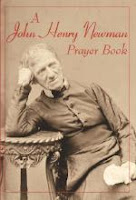Catholic Foundation Stones
Written by Fr John Wilson (Episcopal Vicar for Evangelisation in the Diocese of Leeds) and Fr Andrew Allman (Vocations Director for the Diocese of Lancaster), Catholic Foundation Stones is a basic introduction to the Catholic faith.
It is simple and straightforward and can be used with all kinds of different groups and individuals. For example:
• People who are interested in learning about the Catholic faith
• People who are interested in becoming Catholics
• Catholics who wish to deepen their knowledge of the faith
• Catholics who are returning to the practice of their faith
• Staff in Catholic schools, both Catholic and non-Catholic, who would benefit from learning more about the faith that underpins where they work
Structured around the four sections of the Catechism of the Catholic Church, and divided into twelve sessions, this book will be useful in many different areas of parish and school catechesis and faith formation.
"I highly recommend this resource for use in Catholic parishes and schools. For anyone who wants to deepen their understanding of the Catholic faith, Catholic Foundation Stones is a very accessible and inviting place to begin."(From the Foreword by the Rt Revd Arthur Roche, Bishop of Leeds).
To be published on 15th September, the book will be available from all of our bookshops or online here.



















